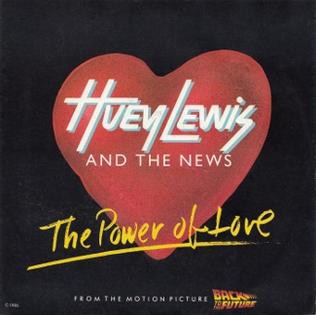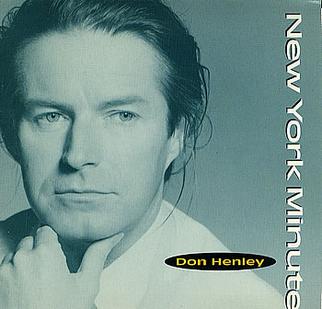 “Hungry Like the Wolf” by Duran Duran is a quintessential artifact of 1980s pop culture—bold, stylish, cinematic, and irrepressibly catchy. Released in 1982, it helped catapult the British band into international superstardom, becoming a defining song of the New Romantic movement and a staple of the MTV era. It was sleek but raw, modern yet primal, and encapsulated the restless energy of a generation stepping into a new decade of technological flash and emotional complexity. At once a musical seduction and a chase through neon-soaked nightscapes, “Hungry Like the Wolf” became more than just a hit single—it became an anthem of desire, fashion, and pop futurism.
“Hungry Like the Wolf” by Duran Duran is a quintessential artifact of 1980s pop culture—bold, stylish, cinematic, and irrepressibly catchy. Released in 1982, it helped catapult the British band into international superstardom, becoming a defining song of the New Romantic movement and a staple of the MTV era. It was sleek but raw, modern yet primal, and encapsulated the restless energy of a generation stepping into a new decade of technological flash and emotional complexity. At once a musical seduction and a chase through neon-soaked nightscapes, “Hungry Like the Wolf” became more than just a hit single—it became an anthem of desire, fashion, and pop futurism.
Emerging from Birmingham, England, Duran Duran was at the forefront of a new wave of British artists who fused the icy detachment of synth-pop with the glam swagger of rock and the rhythm of dance music. With influences ranging from David Bowie to Roxy Music to Chic, the band married high-concept aesthetics with pop accessibility. “Hungry Like the Wolf” epitomized that balance. It was the band’s breakout in the United States and signaled a shift in the pop music landscape: one where visuals, video, and sound were no longer separate but intertwined into a multi-sensory brand.
From its opening guitar lick—a distinctive, choppy riff that slices through the silence like a blade—the song establishes itself as something immediate and alive. John Taylor’s bass line bubbles beneath the surface like a predator beneath water, while Nick Rhodes’ synthesizers swirl and shimmer, conjuring an atmosphere that’s simultaneously synthetic and organic. Roger Taylor’s drum pattern is urgent and tribal, driving the track forward with a rhythmic intensity that mirrors the song’s lyrical themes. Over all of it, Simon Le Bon’s voice cuts through with equal parts elegance and hunger. He’s not just singing—he’s hunting.
The lyrics of “Hungry Like the Wolf” are steeped in metaphor, primal desire, and mythic allusion. Le Bon channels both the cunning of the wolf and the seductiveness of a pursuer in heat. “Dark in the city, night is a wire / Steam in the subway, earth is afire,” he sings, painting a world of shadows and heat, tension and release. The song captures that restless longing that’s part erotic, part existential—the urge to chase something unnamed, a thrill, a person, an escape. The chorus—“I’m on the hunt, I’m after you”—is simple but loaded, turning the act of desire into a game, a ritual, a rite of passage.
At its core, “Hungry Like the Wolf” is a song about pursuit—romantic, physical, maybe even spiritual. The wolf becomes both metaphor and totem, a symbol of something wild within the self. Unlike the brooding melancholy of some of their peers in the early ’80s, Duran Duran brought an exuberant confidence to their sound. This was not introspection—it was action. It was the sound of a band hungry not just for love, but for experience, for fame, for meaning in a world that was becoming increasingly artificial. And yet, they wrapped that message in a package so stylish and fun that it became irresistible to millions.
The recording process for the song, as recounted by band members, was unusually swift and inspired. Written during a jam session, the track came together quickly, with its infectious energy present from the first take. Producer Colin Thurston helped sculpt the song’s sonic identity, ensuring that every instrument served the groove while allowing enough space for the vocals and synth textures to breathe. The result is a song that feels tight yet explosive, polished yet spontaneous.
“Hungry Like the Wolf” initially had modest success in the UK, but it wasn’t until the accompanying music video hit MTV that the song truly exploded. The video, shot on location in Sri Lanka by director Russell Mulcahy, was a game-changer. Drawing on the exoticism of adventure films like Raiders of the Lost Ark, the video featured Le Bon racing through jungles, navigating bazaars, and emerging from rivers in pursuit of a mysterious woman. The band’s stylish, cinematic image was cemented in this visual—a perfect fusion of music, fashion, and film. The video’s lush production values and narrative flair made it one of MTV’s most requested clips, and it helped Duran Duran break through in America, where the visual component of music was becoming increasingly vital.
This was the moment when MTV and pop music entered into a full-fledged marriage, and Duran Duran were the poster children for the new age. “Hungry Like the Wolf” was not just heard—it was seen, felt, imagined. The band’s good looks, sharp clothes, and theatrical performances made them icons of youth and glamour. But they also had the musical chops to back it up. They weren’t just posing—they were pushing boundaries.
The song reached No. 3 on the Billboard Hot 100 and eventually went gold in the United States. It became one of the band’s signature tracks, opening the door for future hits like “Rio,” “Save a Prayer,” and “The Reflex.” But more than that, it helped define what pop music could be in the 1980s: not just a sound, but a spectacle. It wasn’t enough to have a catchy song—you had to have a look, a story, a presence. Duran Duran understood that instinctively, and “Hungry Like the Wolf” was their proof of concept.
Beyond its commercial success, the song’s influence can be felt in the decades that followed. Its blending of rock instrumentation with synthesizers laid the groundwork for bands like The Killers, Franz Ferdinand, and even early Maroon 5. The way it made sexuality playful rather than heavy-handed set it apart from the macho posturing of many male-fronted bands of the time. It was flirtatious, theatrical, a little dangerous, but ultimately celebratory. The hunt in “Hungry Like the Wolf” isn’t about domination—it’s about connection. It’s about the thrill of pursuit, of discovery, of letting your instincts take the wheel.
The vocal delivery of Le Bon deserves special mention. His phrasing is sharp, rhythmic, and elastic. He rides the beat like a dancer, emphasizing key syllables—“strut on a line, it’s discord and rhyme”—that make the lyrics feel like riddles wrapped in poetry. His falsetto in the chorus lifts the song into the stratosphere, while his growled ad-libs (“ow!” and “do do do do do do do dodo dodo”) give it a tactile sense of presence. He doesn’t just narrate the chase—he invites the listener to join it.
The song’s bridge is another moment of brilliance. As the beat momentarily drops out and Le Bon whispers, “Hungry like the wolf,” a brief silence hovers before the full force of the track returns. It’s a moment of anticipation and release, tension and climax. That structure mirrors the song’s theme of chase and capture, tease and satisfaction. Every aspect of the song—melody, rhythm, lyrics, production—is in service of that thematic unity.
Over the years, “Hungry Like the Wolf” has remained one of Duran Duran’s most enduring hits. It has been featured in dozens of films, television shows, and advertisements, from Old School to Stranger Things. It has been parodied, remixed, and covered, but its original version still reigns supreme. The song’s staying power comes from its ability to balance opposites—animal and machine, romance and danger, simplicity and sophistication. It is of its time and beyond it.
For many fans, “Hungry Like the Wolf” is more than a song—it’s a memory. It recalls a time when music felt like an adventure, when every new video premiere on MTV was an event, when bands like Duran Duran felt like they were from another, cooler planet. It was a moment when glam wasn’t empty, when pop had edge, when synthesizers sounded like the future. And somehow, even after all this time, the song still sparks that same adrenaline.
What sets “Hungry Like the Wolf” apart is how completely it commits to its own mythology. It doesn’t wink at the camera. It doesn’t apologize for its drama. It fully embraces the idea that a pop song can be a narrative, a performance, a fantasy. There’s no cynicism here—just a full-throttle sprint through jungles of sound and emotion. The band is hungry, yes—but not just for fame or flesh. They’re hungry for sensation, for expression, for transformation. And they bring the listener along for the ride.
Duran Duran’s contribution to music history cannot be overstated. They were among the first bands to truly understand the power of the music video, to embrace style as substance, to merge high fashion and pop hooks without sacrificing authenticity. “Hungry Like the Wolf” is their most perfect expression of that ethos. It is, even now, a masterclass in how to create a pop song that moves bodies and imaginations at the same time.
Looking back, it’s easy to see why the song had the impact it did. It arrived at a moment when the world was ready for something new—something that embraced the emotional extremes of adolescence, the technological shifts of a new decade, and the eternal human need for connection. “Hungry Like the Wolf” didn’t just meet that moment—it defined it.
More than forty years later, the song still sounds fresh. Still dangerous. Still hungry. It hasn’t aged into nostalgia—it has evolved into legend. That’s the mark of a true classic. It doesn’t belong to one moment. It belongs to all moments. Every time it plays, whether on a dancefloor, in a movie, or through someone’s earbuds on a lonely walk home, it reignites that primal spark.
It whispers, it growls, it howls—and then it pounces. And we’re all better for it.


